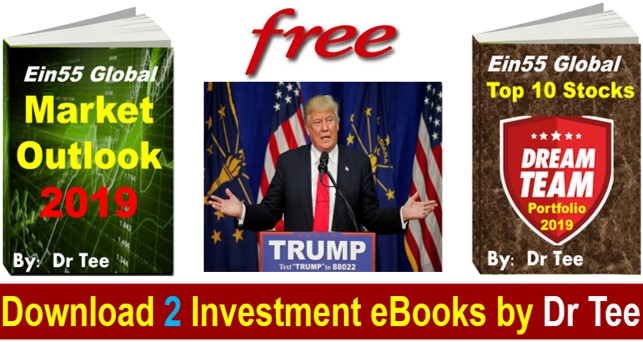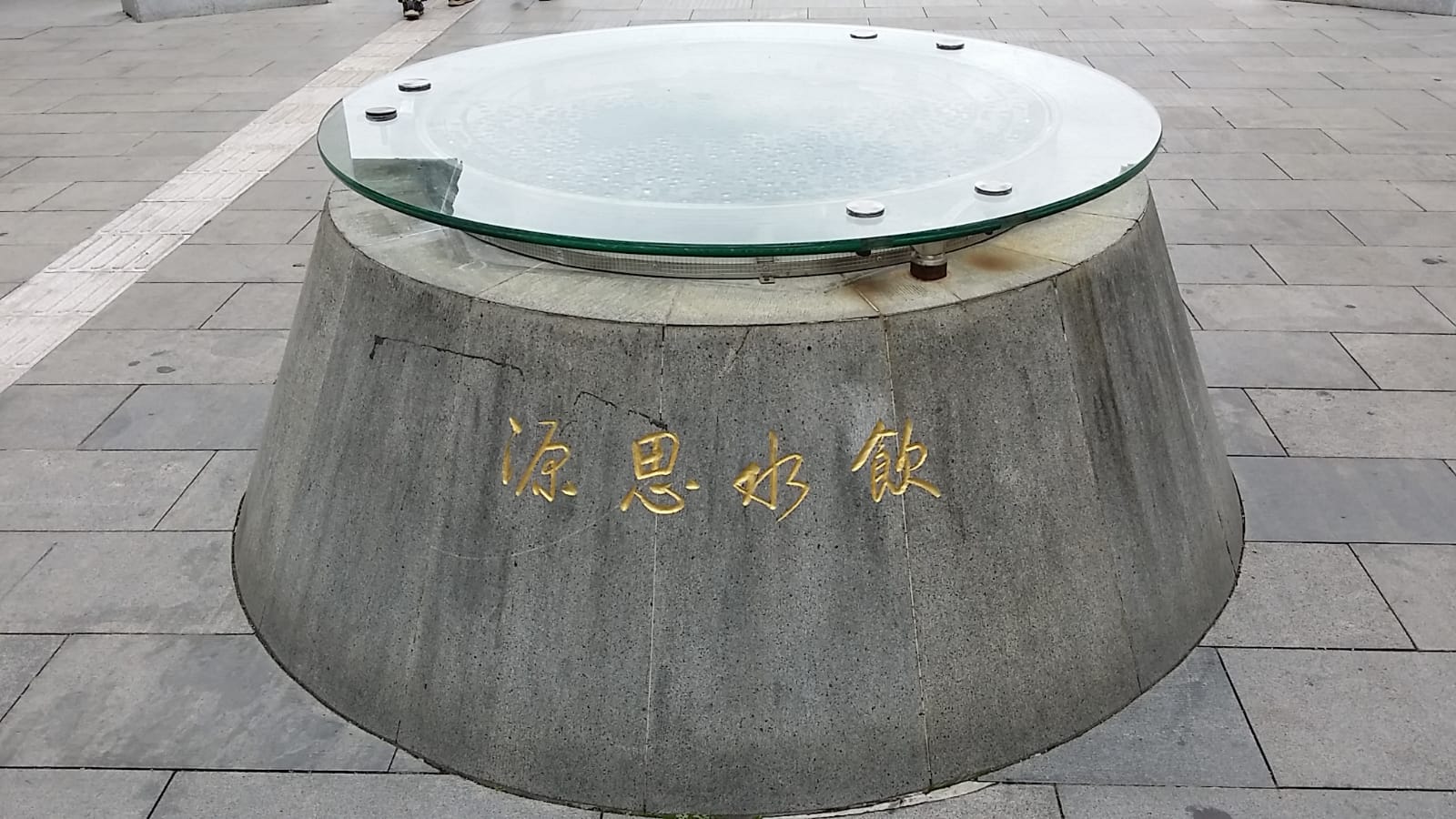
Root Finding Trip to China Fujian (寻根之旅) with Personal Analysis of China Stocks Opportunity

Job vs Hobby

Dr Tee has been working in semiconductor industry for about 20 years in the past, climbing up corporate ladder from engineer to manager to director to VP, eventually I am CEO of my own company (10% semicon consulting + 90% investment education).
I was the General Chair of 10th EPTC 2008 Conference (Top IC packaging conference in Asia), 10 years have passed since then, good to gather with many old friends in tonight’s 20th anniversary of EPTC 2018 conference again.
I am glad to meet up today with a few Ein55 students who are working in semicon industry in Sentosa Resort World Convention Center. I have also shared my experience with younger members in semiconductor field, here is the summary:
1) Semiconductor is cyclic in nature. Staff could work hard (sometimes overnight without sleep, I did that in my early years as well) for company to make money but when business is bad, company may not show mercy to layoff staff, simply Hire & Fire when needed.
2) It is important to plan ahead during bull market when company business is doing well, converting the active income into an investment portfolio before retirement. A professional job should be a hobby for us while investment by right is an hobby, should become primary focus for us.
3) You may need to a PhD for engineering / semicon but only need primary school (PSLE) qualification for stock investment. In fact, many smart people lose money in stocks, even university professors are interested to know how to invest to profit in lifetime, not just depend on a job with salary, working till retirement. Stock investment can be very simple (if following step by step on proven methods such as Optimism + FA +TA + PA) but also can be very complicated (if you try other speculative ways such as listening to news and rumors).
4) When working in semicon / technology field, stock investment should be on other industries (eg. property, healthcare, F&B, etc) for diversification as each sector has its own cycle. If work and invest in only 1 sector, risk is high when sector crisis comes (eg. Oil & Gas, Dot Com bubble, etc)
5) We were in Genting Resort World, so I use the example of shareholding is as if owning a casino table within the big casino, sharing the profits gained without need to put in any active effort, therefore it is called passive income.
There is a fine line between job and hobby if we know how to balance. We only need to invest 10% time on investment but the outcome can be more important than 90% of time spent in job which help other people’s company to make money. Invest in oneself, not others.
I will share more life lessons (investment / work) with members in tomorrow session during EPTC 2018. For others, you are welcomed to listen to my 4 hours free investment course, register in www.ein55.com, this could be the best investment of time, learn with open mind, it is not a sales talk.
5 Stock Investing Lessons from Car COE

Register Here to profit from stock investment: www.ein55.com
Red River for Global Stock Market (满江红)

Bearish stock market today with all major stock markets in red. As mentioned before, when short term trends are bearish in global stock market, probability is higher for the share prices to go down further.
The main worry now, even US S&P 500 is below 2700 points, if falling further to below 2600 points, then it will follow the short term bearish trend of global stock market, then the risk of global financial crisis will be greater, unless US-China trade war could see light at the end of tunnel.
Based on Trump’s strong actions so far, the deadlock likely will continue until year 2020, second term of US presidential election. The House of Congress dominated by Democrats may also create new variables such as investigation of Trump or slowdown his future actions.
Market fear could be contagious, if US (contributes to about 50% of world stock value) stock market is also falling down, even strong fundamental stocks could have capital loss in stock market.
Take actions now:
1) If you have stocks, do Spring Cleaning (what to hold or sell)
2) If you don’t have stocks, aim for Dream Team stocks (what to buy, when to buy)
Spring Cleaning could be painful for some people. Ideally, cut loss should be integrated into earlier strategy when price drops by 10%. If the price drops more than 20% or even 50%, most people would simply ignore the losses, changing from a short term trader to a “long term investor” to hold on to paper loss.
Spring Cleaning does not mean it is a sell. It could be a hold. In general, perform spring cleaning this way:
1) Strong Fundamental Stocks vs Weak Fundamental Stocks
– Keep Strong One, Sell Weak One
2) If Strong Fundamental: Cyclic vs Growth Stock
– For Cyclic stocks (eg. banking finance, property, technology sector, airline), even if fundamental is good, if trend is down, need to consider to sell first, one could buy back in future.
For growth stocks, it is possible to hold with condition that the entry price last time was a low optimism price, otherwise it could still be a loss by now as entry / buying price is too high.
6 Strategies NOT to Lose Money in Stocks
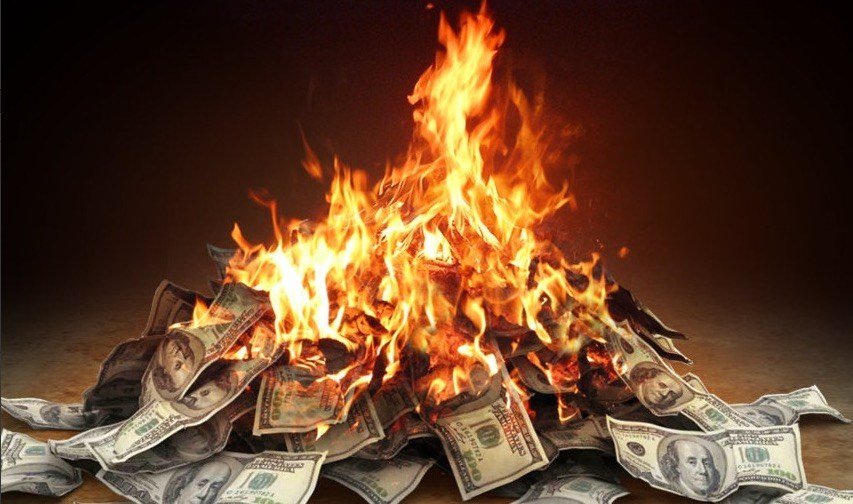
Download Latest 2 eBooks by Dr Tee: Market Outlook 2019 & Top 10 Dream Team Stocks
Fresh from Oven: Download the latest 2 FREE high-quality stock investment eBook by Dr Tee on (1) “Global Market Outlook 2019”, covering comprehensive investment topics: Stock, Property, Commodity, Forex, Bond and Political Economy & (2) “Dream Team Portfolio 2019” with Top 10 global stocks for capital gains and passive incomes. Past readers have benefited both stock investment ebook, learning Simple and Powerful strategies which deliver incredible results in stocks.
Are you worried or excited about the current global stock market, especially with the controversial US President, Donald Trump with US-China trade war? Every crisis is an opportunity for investing. You will learn useful methods step by step from 2 valuable FREE stock investment eBook by Dr Tee which work in stock market. Take action now to surprise yourself!
Dr Tee 刚完成2本投资秘籍。《环球市场展望2019》书内覆盖很多在环球主要市场 (美国、新加坡、香港、中国、欧洲) 的投资议题及提供解决方法。《10大梦幻股票2019》书则分享了各种实用投资策略于10大高潜能股票。很多读者已经从Dr Tee过去发表的股票投资书中受惠,大家可在Dr Tee 的最新报告中洞悉环球市场目前面对的风险及机遇。
Table of Contents (FREE Stock Investment eBook #1: Global Stock Market Outlook 2019)
- Mass Market Sentiment Survey (大众市场情绪调查)
- Review of Global Stock Markets (环球股市回顾)
- US Market Outlook (美国市场展望)
- Regional Market Outlook (Europe, China, Hong Kong) (区域市场展望)
- Singapore Market Outlook (Stock & Property) (新加坡市场展望)
- Conclusions and Recommendations (总结及建议)
Table of Contents (FREE Stock Investment eBook #2: Top 10 Global Stocks – Dream Team Portfolio 2019)
- Personalized Stock Investment Portfolio (个人化股票投资组合)
- Ein55 Global Top 10 Stocks (10大全球高潜能股票)
- Summary of Actions (投资方向总结)
The safest time to buy a stock is when everyone is afraid the sky will fall down while the business is still operating normally with consistent performance. This could be a rare opportunity to buy during a crisis, we should learn how to take this advantage to truly buy low sell high.
When Optimism Strategies are combined with Fundamental Analysis (value investing & growth investing), Technical Analysis (support / resistance / trends), and Personal Analysis (mind control of greed and fear), it is very powerful as one can take the right action (Buy, Hold, Sell, Wait or Short) at the right time aligning with his own personality.
The unique Optimism Strategy developed by Dr Tee provides a special advantage to know which investment (stock, forex, property, commodity, bond, etc.) to buy safely, when to buy, when to sell, including the option of long term holding. So far over 30,000 attendees have benefited from Dr Tee high-quality free stock investment course to the public. Take action now to invest in your financial knowledge, starting your journey towards financial freedom.
Dr Tee建立的乐观指数策略让投资者知道哪种投资(股票、外汇、产业、商品、债券等)可以安全进场;何时买入;何时卖出;或选择长期持守。迄今已经有超过3万名人士从Dr Tee为大众提供的高质素免费课程中受惠。在这些高品质的免费股票投资课程里,Dr Tee会按部就班教导学员威力无比的方法,如何挑选强大的环球增长型股,然后耐心等待从不同的危机水平以低价买入,为股息收入持守,之后最终以高价售出来获取资本收益。马上行动,利用你的金融知识进行投资,开始你迈向财务自由之旅。
Stock Investment Course in Singapore: Learn 10 Strategies of Stock Trading & Value Investing (股市投资策略)
1) Master Buy Low Sell High for all investment markets (stock, property, commodity, forex, bond) (买低卖高:股票、房地产、商品、外汇、债券)
2) Profit in bearish and bullish markets, understanding the true impact of US Interest Rate Hike, Bullish Global Economy, Oil & Gas Crisis (环球经济)
3) Long-term stock investment strategies to outperform portfolio return of Temasek, Li Ka-Shing, Warren Buffett, major stock indices/ETF and other funds (长期投资策略)
4) High-probability Shorting techniques for short term traders to profit from falling stock market while others are losing money or doing nothing (短期卖空技巧)
5) Generate consistent Passive Income with REITS and real property with knowhow of high dividend stock and property market cycles (房地产信托股的被动收入)
6) Methods of Spring Cleaning for own stock portfolio to eliminate junk stocks without any hope (股票大扫除)
7) Time for Global Financial Crisis to buy blue chip stocks on sale (危机也是良机)
8) What to buy (stock screening), When to buy/sell (buy low sell how), How much to buy/sell (risk management): (股票三部曲:买何股?何时买卖?买卖多少?)
9) Fundamental Analysis (FA) + Technical Analysis (TA) + Personal Analysis (PA), integrated with unique Optimism Strategy by Dr Tee (乐观指数:三法一体)
10) Global Stock Market Outlook: emerging opportunities with high potential in Singapore, US, China & Hong Kong stock markets (环球股票市场展望: 新美中港,股票良机)
3 BONUSES for Dr Tee Stock Investment Course in Singapore:

Bonus for Readers: Dr Tee Investment Forum with over 7000 members (Private Group)
(Please click “JOIN” with link above and wait for Admin approval of membership)
- Market Outlook (stocks, properties, bonds, forex, commodities, macroeconomy, etc)
市场展望 (股票、房地产、债券、外汇、商品、宏观经济等) - Optimism/ Fundamental / Technical / Personal Analyses
(乐观指数 / 基本分析 / 技术分析 / 个人分析) - Investment risks & opportunities (投资风险及机遇)
- Dr Tee graduates events and activities updates (Dr Tee学员活动最新消息)
Dr Tee Tong Yan (Ein55) Stock Investment Course in Singapore Review:
“I attended your free seminar on 11 March 2015 and CWT was mentioned a couple of times. I entered CWT when it hit $1.50 support on 23 March 2015. I found CWT to have better FA while using the free stock screener shared. I have already recovered the 5-day course fees from CWT. Thanks!”
Robin (audience who attended free stock investment course in Singapore, following by 5-day course in May 2015)
Click here to join FREE Dr Tee (Ein55) Stock Investment Course in Singapore: www.ein55.com
$132,000 Charity Courses Donations for Tzu Chi (慈济) with Summary of Discounted NAV Stocks

Dr Tee, Ein55 Mentor & Graduates have together organised 7 charity investment courses (REITs/Business Trusts in Nov 2015 and May 2017, High Dividend Stocks in Mar 2016 and Oct 2017, Capital Growth Stocks in Apr 2018 and Discounted NAV Stocks in Sep 2016 and Nov 2018) in the past 3 years, donating net income of around $132,000 to Tzu Chi 慈济 (Singapore). We hope to inspire more Ein55 Graduates to reach out the society, helping others who are in need. More importantly, they have also learned the secrets of making money through investment. When more Ein55 Graduates are successful financially, they could also contribute back to the society to help more people in future.
Here are key learning points from the recent Charity Course on Discounted Net Asset Value (DNAV) Stocks:
3 Rules in calculation of Discounted NAV stock value (from Balance Sheet)
1) Non-discounted asset
– Cash, Land & Building, Investment Property that generate rental income, financial asset at market value
2) Zero value asset
– Goodwill, club membership, deferred Tax, Software licenses and etc
3) Up to 50% discount asset
– all remaining asset
Discounted NAV = Sum of “discounted” assets – (Total Liabilities + Minority Interest)
3 Steps in Discounted NAV Stocks Investing Strategy (What to Buy, When to Buy / Sell):
1) Scan out the list of stocks with Price-to-Book Ratio, Price/NAV = PB<1X
Start with balance sheet, restate assets at fair market value to calculate Discounted NAV (DNAV). Classify the stock scanned out into property related stocks and non-property stocks
2) Shortlisting the stock with Price/DNAV <1X, performing 5-Factors Business Fundamental Check.
Rank the final shortlisted D’NAV stock in watch list. For property related stock, look for P/DNAV < 0.8X.
3) Combine Optimism Method to decide BUY/SELL points
BUY – when low optimism, <25% for both Long Term & Medium Term
SELL – when share price > NAV or Optimism >75%
1 of the 10 case studies mentioned in this charity course: Bursa giant stock, Selangor Properties Berhad (1783.KL) is acquired recently after the course notes is prepared, share price goes up by 40%. I am not surprised the remaining 9 case studies would be target of acquisition in future
We should drive the money (helping others when you are successful), not driven by the money (making money only for own gain). Investors should learn the unique Optimism Strategies with FA (Fundamental Analysis) + TA (Technical Analysis) + PA (Personal Analysis) developed by Dr Tee to choose strong global stocks, buying them at low price, then holding for consistent dividend payout or selling for high capital gains. High-quality free stock investment courses are provided by Dr Tee to the public.
Key Learning Summary of Ein55 Fundamental Analysis Course #1
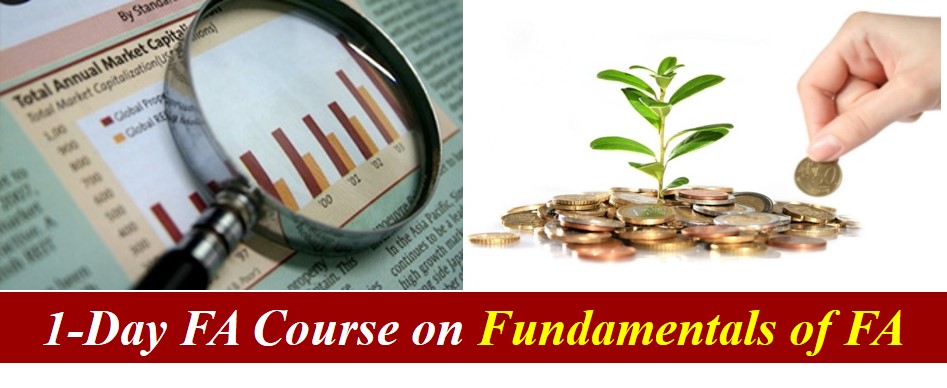
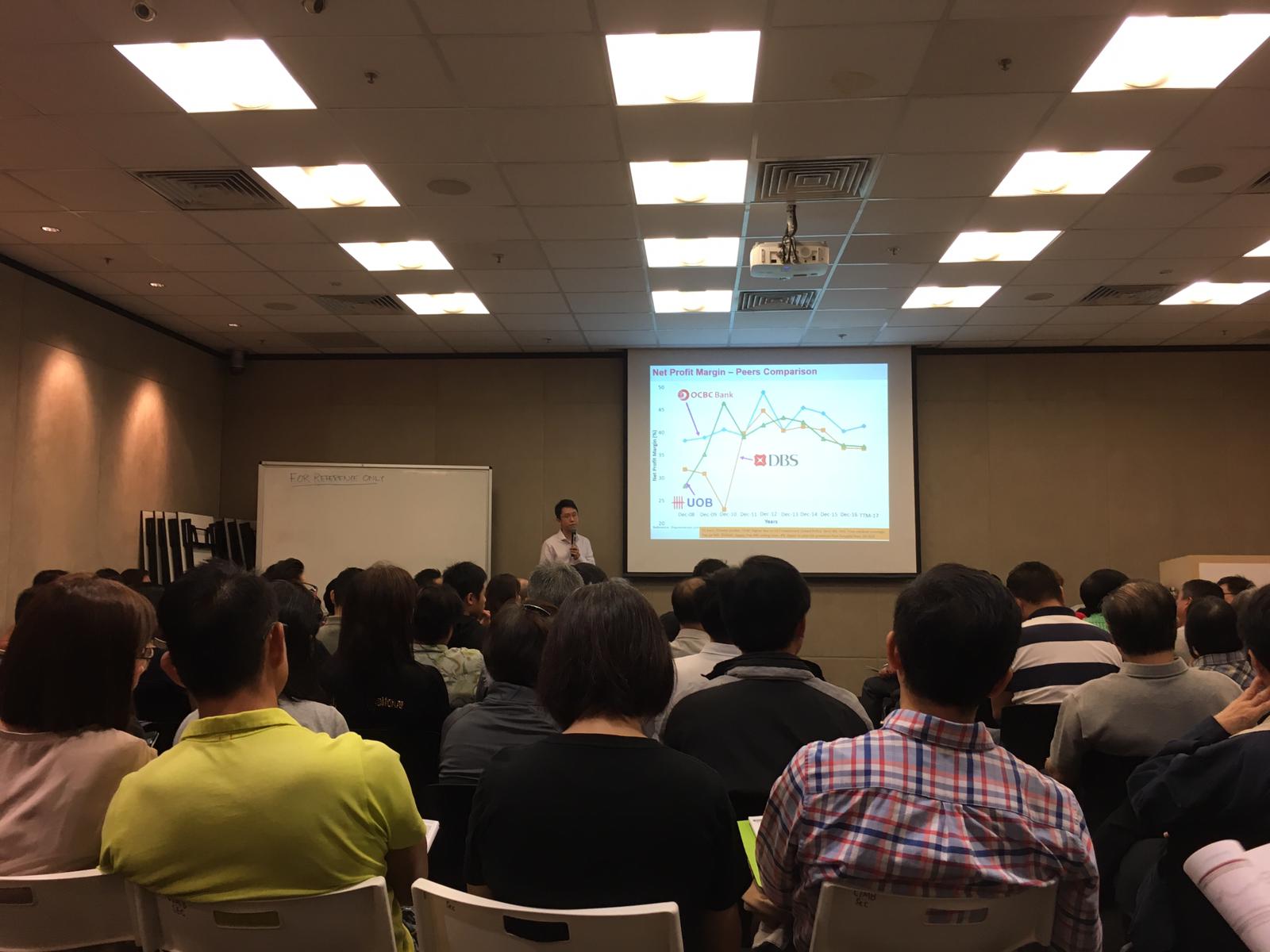
Summary of Monthly Season Effect on Global Stock Market

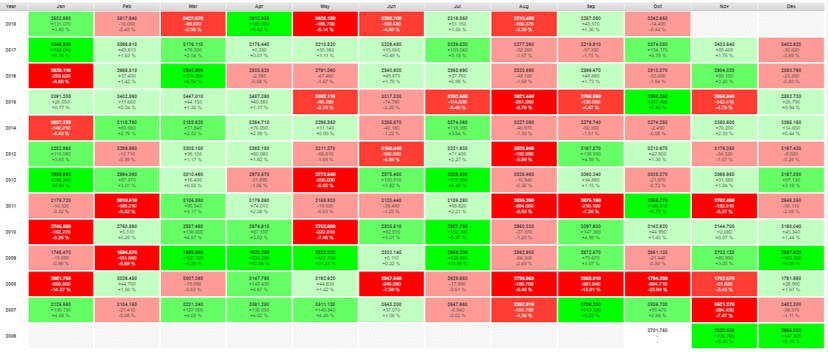
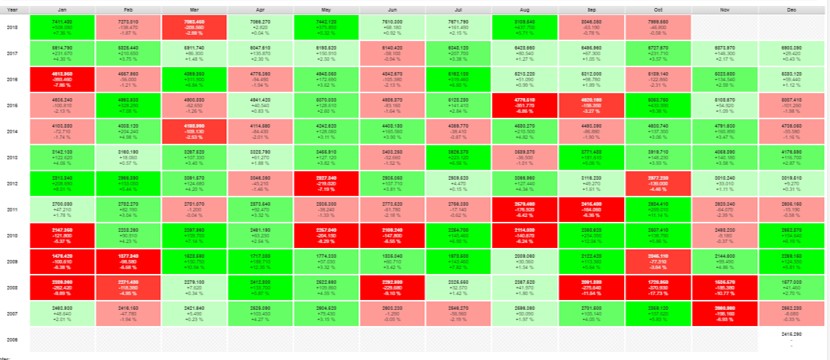
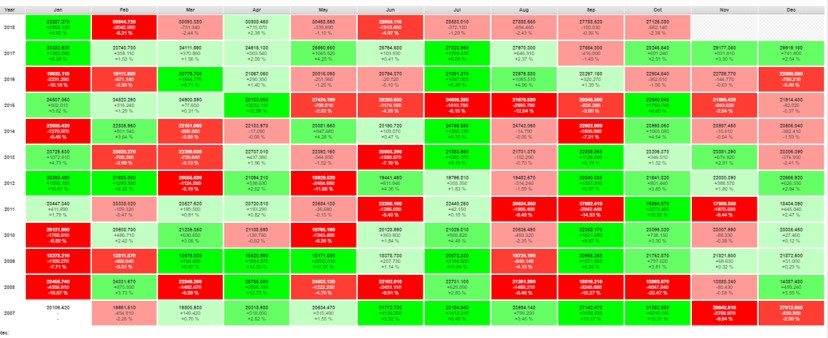
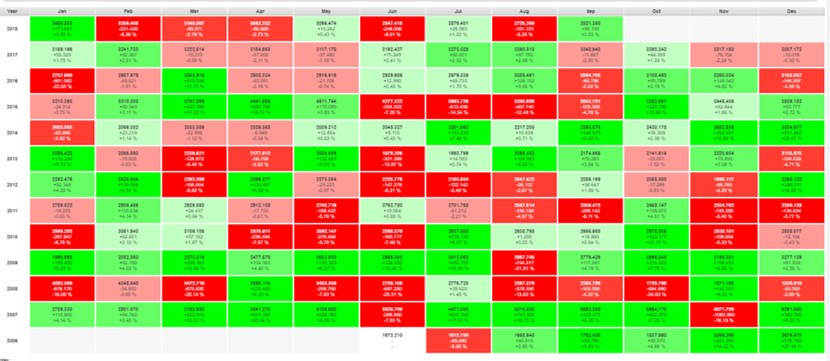
US Interest Rate Hike to 2.25%
 US consistently increases the interest rate, latest adjustment is to 2-2.25%. Despite the US and global economy are still bullish, this implies less time remaining for the bull market.
US consistently increases the interest rate, latest adjustment is to 2-2.25%. Despite the US and global economy are still bullish, this implies less time remaining for the bull market.
When US interest rate exceeds 3% and/or when 10 years US bond yield is over 4%, investor has to be very careful, especially over the next 12 months for possible black swan which could trigger the next major financial crisis.
It does not mean crisis will come immediately when interest rate is over 3%. It is based on probability approach. Despite higher interest rate now, since stock and property markets are still bullish in US, people are not concerned as they could use higher salary (employee market, currently 3.9% unemployment rate in US), higher profit from stocks/properties to pay for higher inflation or interest/mortgage rates.
A safer way is short term trading/investing, one could leverage on the last phase of bullish market (at least for US) and also prevent the big bear when trend is reversed. However, buy and sell in shorter term may not be suitable for everyone, especially in a volatile market (when VIX is over 20-30 points).
Learn from Dr Tee through free 4hr stock investment course to time for the next global financial crisis through integration of Macroeconomic Analysis (MA), Fundamental Analysis (FA), Business Analysis (BA), Technical Analysis (TA), Personal Analysis (PA) and Optimism Analysis (OA). Register Here.

